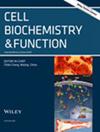miR-125a Serves a Diagnostic Biomarker in Patients With Carotid Artery Stenosis and Predicts the Occurrence of Cerebral Ischemic Event
Abstract
The study was to evaluate the diagnostic significance of serum miR-125a in individuals with carotid artery stenosis (CAS) and its predictive capacity for cerebral ischemic events (CIEs). This study enrolled 116 healthy controls and 122 CAS patients. Serum miR-125a levels were quantified via RT-qPCR. Receiver operating characteristic (ROC) curve was utilized to evaluate the diagnostic value of miR-125a in differentiating CAS patients from healthy subjects. Logistic regression analysis was performed to explore the association between miR-125a levels and the severity of CAS. Kaplan-Meier (K-M) survival analysis and Cox regression were employed to evaluate the predictive value of miR-125a for the incidence of CIEs throughout the follow-up period. Serum miR-125a level was upregulated in CAS patients compared with controls. ROC curve analysis showed AUC of 0.931 for miR-125a in distinguishing CAS patients. Logistic regression identified miR-125a and low HDL levels as independent risk factors for severe stenosis. Cox regression analysis showed that high miR-125a expression was an independent predictor of CIEs, along with severe stenosis and low HDL. Serum miR-125a serves as a highly specific biomarker for early CAS diagnosis and predicts the risk of CIEs, providing a novel molecular target for CAS risk stratification and clinical intervention.




 求助内容:
求助内容: 应助结果提醒方式:
应助结果提醒方式:


